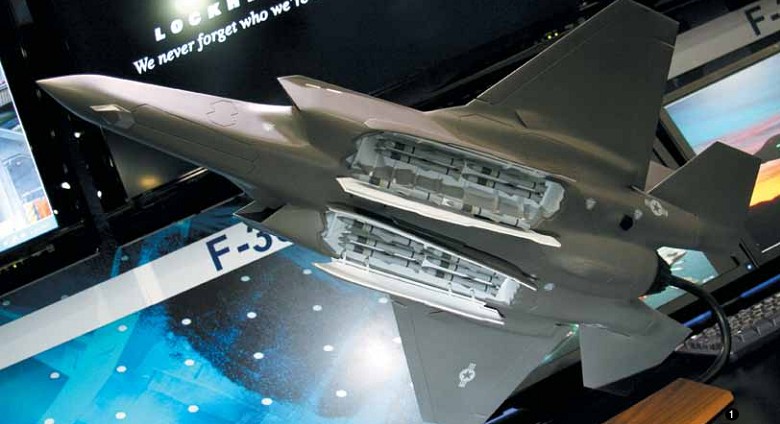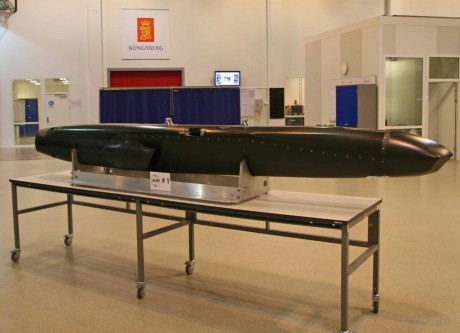Joint Strike Fighter aims to be three aircraft in one
The F-35 Joint Strike Fighter
got a boost last month when the Pentagon established the first operational squadron of the stealthy, supersonic jet under development by Lockheed Martin.
The rollout in Yuma of the most technologically challenging of three versions in initial production — one for the Marine Corps that lands like a helicopter — may muffle criticism about the Defense Department's largest and most costly weapons procurement. Critics argue that the Pentagon should curtail purchases or bow out of the program.
At the dedication ceremony for the new squadron, one of the most strident critics of the long-delayed, budget-busting F-35 program, Arizona Sen. John McCain, said it is finally gathering momentum.
More than a decade into development, however, lawmakers and analysts are divided about whether the F-35 will eventually deliver on its promise of advanced "fifth generation" capabilities at an affordable price tag.
Before the jet is ready for full production, much depends on the next few years of flight testing and refinements in millions of lines of software code that control everything from weapons systems to maintenance diagnostics.
In the interim, "there are people who are prepared to believe this is the worst aircraft yet designed. And then there are people who think that this is still the most promising aircraft in the world," said Richard Aboulafia, an analyst with Teal Group. "It brings out extremes, and a lot of passion on both sides. The reality is there are some good things and there are some bad things."
Loren Thompson, of the Lexington Institute think tank, is an adviser to Lockheed Martin as well as other companies competing for Pentagon funding. He said the
F-35, also known as Lightning II, is shaping up to be the most capable, cost-effective tactical aircraft in history.
"
The F-35 program is making steady progress in reducing the cost of each aircraft and meeting its testing goals. The learning curve the program is on should reduce the price tag for the most common version of the F-35 to what Cold War fighters cost by 2017, while delivering huge gains in performance," he said.
The Joint Strike Fighter was conceived as a family of tactical aircraft for the Air Force, Navy and Marine Corps with sophisticated sensors, radar evasion and other "next generation" capabilities. Sharing a production line and at least 70 percent of airframe components, propulsion and avionics would limit costs. Computer modeling would shorten the timeline from design to test models and full production.
A team led by Lockheed Martin was awarded the development contract in 2001 after a five-year design competition. Eight international partners pitched in more than $5 billion in development costs and pledged to buy hundreds of the jets: the United Kingdom, Italy, the Netherlands, Turkey, Canada, Australia, Denmark and Norway. Others now involved are Israel, Japan and Singapore.
The program soon bogged down and costs ballooned, because of a weighty airframe and other design do-overs for the complicated trio of jets. Frank Kendall, now the Pentagon's top weapons buyer, has called the rush to initial production so early into flight testing "acquisition malpractice."
The first operational models are not expected to deploy until 2015. Full-rate production originally estimated to begin this year has slipped to 2018 or beyond.
The cost of developing and purchasing the jets for the three services rose from an original estimate of $233 billion to more than $395 billion under the current plan to build 2,443 by the late 2030s, with a per-unit cost about double the initial $69 million price tag.
Lockheed Martin officials said
they have dropped the unit cost by almost 50 percent over the first four years of production and it will drop further as they ramp up from about 32 planes a year now to one a day. By that time the company expects improved efficiency and economies of scale to bring the price in line with an F-16 Fighting Falcon, or about $70 million.:what:
"We're down that initial learning curve," said Eric Van Camp, Lockheed's liaison to the Marine Corps. "We have only rolled out about 65 airplanes today. We have a program of record exceeding 3,100 airplanes. We are just getting started."
Some question why the U.S. needs another, less capable, stealth jet in addition to the pricey F-22 Raptor, since no other countries deploy such technology and radar advances could make it obsolete.
Stealth gives the F-35 a superior ability to survive in combat, Lockheed Martin officials said. "
Short of the F-22, the F-35 is the best air-to-air machine that will be in the sky in the future," said Steve O'Bryan, vice president of F-35 program integration. "If it is a stealth airplane and you can't see it, that allows you to have a first look, first shot, first kill before an adversary airplane even knows you're there."
The debate over stealth and affordability will continue, but the F-35 program has probably crossed into "too big to fail" territory, analysts said. What are the services getting for the money invested so far?
All three versions of the radar-evading jet are single-seaters with a single engine that will travel as fast as Mach 1.6, or faster than 1,200 mph and the speed of sound.
The Air Force ordered a model that lands on conventional runways and can maneuver under the most g forces, 9.
The F-35A was the first version of the Joint Strike Fighter to fly, in December 2006. It is scheduled to have the largest production run, accounting for most overseas purchases and a planned U.S. buy of 1,763.
Lockheed Martin officials say the F-35A is demonstrating the maturing design and capabilities of the new jet — it has flown at its maximum speed and g-rating, above 40,000 feet and at the extreme 50-degree angle of attack. Critical systems they've been exercising on the A model include electronic warfare to track enemy forces and jam their radio frequencies, and a 360-degree distributed aperture that warns the pilot of incoming missiles and other threats.
The Navy's version of the Joint Strike Fighter, the F-35C, made its maiden flight in June 2010. It is designed as a heavier, sturdier jet with a tailhook mechanism enabling it to land on an aircraft carrier. When it reportedly failed to catch the arresting wire during land tests, Lockheed Martin said it would redesign the part.
The C model has a wider wing span, by about 8 feet, to allow it to land at slower speeds on the carrier. That's important to put less stress on the metal flight deck, said Capt. Paul Overstreet, F-35 weapon systems program manager at Patuxent River Naval Air Station in Maryland.
It has two tires on the nose gear to better withstand the launch off ships by a steam-driven "catapult" device. And it will be compatible with the upcoming electromagnetic launch system, EMALS, which the Navy wants to use on the coming Ford class of aircraft carriers.
The Navy will be the last military branch to introduce the new jet into service. Operational evaluations required before it can enter the fleet are anticipated in 2018, officials said.
In February, the first production jet is expected at Florida's Eglin Air Force Base, where the Navy is standing up the first F-35C training squadron.
The service intends to purchase 260 carrier variants of the F-35. In addition, the Marine Corps plans to buy 67 for its pilots assigned to carriers, a Marine spokesman said.
The Marines ordered the world's first stealth jet that can land vertically. The Corps wants to maintain its ability to fly from small Navy ships and austere areas lacking full-length runways.
It also
wants to replace all of its F/A-18 Hornets, EA-6B Prowlers, and the vertical landing jet it has now, the AV-8 Harrier, with one aircraft — the F-35.
Lockheed Martin was awarded the coveted Collier Trophy for the greatest aeronautic achievement in America in 2001 for the innovative clutch fan that makes the B model a short-takeoff, vertical-landing jet.
The design, considered an elegant and baroque engineering feat, draws power from the main engine to drive a center fan. Other jets lug around an extra turbine or duct air off the engine like the subsonic, short-ranging Harrier.
The F-35B is a quantum leap over the Harrier, but it
has a smaller combat radius than the Navy and Air Force versions of the jet.
The first B model took flight in June 2008. After a rough start in flight testing, the jet successfully completed initial shipboard trials in October 2011. In 2010 the jet did about 10 vertical landings; last year it was over 250, Lockheed Martin officials said.
The Corps plans to buy 353 of the F-35B. Critics say the service would do fine without a vertical landing jet, since the Marines had some of their finest moments before they got Harriers in 1975. Supporters say the capability effectively doubles the U.S. aircraft carrier fleet.
In 2000, the Corps passed on buying the "fourth generation" E and F model F/A-18 Super Hornets the Navy flies.
Gen. James Amos, commandant of the Marine Corps, said he still thinks it was a good decision to wait for the Joint Strike Fighter, one that saved billions.
No one expected the F-35 timeline would slide right, the U.S. would fight two long wars and the Pentagon budget would tank.
Today, as the cost of maintaining its aging tactical fleet of aircraft rises, the Marine Corps has no fallback plan without the F-35.
Like its reliance on another revolutionary aircraft, the MV-22 tilt-rotor, "I'm kind of stuck, I've got to do this thing," Amos said in an interview. "I need the airplane."
Joint Strike Fighter aims to be three aircraft in one






